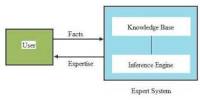The Women Entrepreneurs of Bangladesh Current situations & ICT
In recent years, like other developing countries of the world, Bangladesh has been focusing attention on the most disadvantaged group in the society – the women. Realization has gradually dawned on all concerned that a society cannot afford to waste half of its human resources by discrimination on grounds of sex. This increasing awareness on the part of the government has led to the adoption of national policies to facilitate a development process involving women in all spheres particularly in economic activities focusing especially on entrepreneurship development. The overwhelming majority of women in Bangladesh are not only poor, but also caught between two vastly different worlds — the world determined by culture and tradition that confines their activities inside family homesteads, where they are regarded more as a commodity necessary only for bearing and rearing children and the world shaped by increasing landlessness and poverty that focus them outside into various economic activities for survival. In Bangladesh, the women entrepreneurs, who have accepted the challenges of life and have emerged as leaders in the socio- economic development, earn for themselves and for their families or contributing towards the socio- political upliftment of the women. In our country women lack assistance is in the access to credit, provision of skill training, and market facilities.

Women entrepreneurship in the rural industries is a new arena in the socio- economic environment of Bangladesh. In view of the need to bring the rural womenfolk in the development stream of the country, both the Government, the NGOs and other related agencies have provided ample opportunities to promote entrepreneurial skill among women. Income- generating activities, credit facilities, skill training, market opportunities have all combined to pave the way for the emergence of entrepreneurial development among women in rural Bangladesh.
Women have achieved good prospects in industry, especially the small and cottage and micro-home-based ones. Their present involvement in manufacturing and in the recent trends of their involvement in construction activities in growing numbers is likely to continue. Women have emerged as exporters and their control of export- oriented industries, are promising areas for enhanced female participation and employment. Women’s growing involvement in the construction of civil works gives evidence to their potential regarding market growth opportunities and should be encouraged. To stimulate female entrepreneurship and create further employment opportunities, training programs for relevant issues, need to be provided to women currently in business. Where women have access to market information and display of products they can increase their business acumen, especially with respect to demand for a wide- range of products they might choose to produce.
Types of Production Units and Trades include the common small scale production units such as Handicrafts with various types of raw materials, Handloom Weaving & Spinning, Basketry, Mat making, Manufacture of Coir products. Fishing Net making, Paddy husking by Dheki, Oil production by Ghani, Jute production and sale, Jute goods production. Pottery, Cane and bamboo products, Seri culture, Silk weaving, Honey Making, Screen print & Batik, Embroidery, Dressmaking. Tailoring, Puffed Rice Making, Food production( packed or retail sale of dry food), Food Processing, Wood craft & Furniture, Molasses making, Biri( indigenous cigarette made with special leaves) production, Milk production units, dairy and milk products, Dyeing and printing, Book Binding, Confectionery, Urea Molasses Block( cattle feed) etc., Nursery and Horticulture production. Kitchen gardening, poultry rearing( sale of eggs, poultry, chicks), goat and sheep rearing, cattle fattening are common agro- based occupations.
Women entrepreneurs should be provided special facilities to develop their enterprises. These include:
1) Development Banks with separate advisory service cell for women;
(2) Separate counters in counters in commercial banks for women;
(3) Arrangement of exclusive fairs to promote products manufactured by small & cottage based units;
(4) Fixed quota of stalls for women entrepreneurs at export fairs;
(5) Special market facilities both in the domestic and the international arena.
Government resources are limited. Infrastructure development and other broad sectors of economy demand and consume major share of the national development budget. It is thus sometimes said that poverty alleviation goal receives more palliatives than substance. In face of things as they stand, both the GOs and the private sector have a major responsibility to promote entrepreneurship development for women. Without that the advancement of women will remain a far cry.
Role played by BSRS for women entrepreneur development:
On behalf of the government BSRS has arranged some policies and schemes to promote the development of women entrepreneurship. Very few women entrepreneurs have so far taken loan from BSRS. This is due to the loan granting process and the formalities that are required to meet make a bit difficult for women to get the loan amount. However BSRS with the help of some other NGOs’ has taken initiatives such as:
1) Setting up of a Women Entrepreneurship Development Cell;
(2) Identification of women entrepreneurs of Bangladesh;
(3) Planned Publication of a directory of women entrepreneurs with their
addresses, forms of business, products manufactured etc.;
(4) Organizing entrepreneurship development training;
(5) Co-organizing convention of women entrepreneurs, discussion meetings on the problems and prospects of women entrepreneurship in Bangladesh in the grass root level
(7) Arranging market opportunities.
Women in ICT: Bangladesh View:
General perception of ICT sector comes as a non discriminatory sector. With intellectual labor as its capital, ICT can become as a magic wand to disseminate all inequality.
This year marks (March 08) the 96th International Women’s Day (IWD). Pursuant to the declaration by the Socialist Party of USA, the first National Women’s Day was observed across the United States on February 28, 1909. But in the 2nd International Conference of Socialist Women, held in Copenhagen in 1910, it was resolved to observe an annual women’s day as a uniform international action. The date was nominated in recognition of the United States’ Garments workers’ demonstration, which was held on March 08, 1857. The purpose of the demonstration was to increase the wage and reduce the working hours of the Garments workers. Government of Bangladesh started to observe the International Women’s Day since March 08, 1984.
International Women’s Day stands for equality between women and men. During International Women’s Year in 1975, International Women’s Day was given official recognition by the United Nations and was taken up by many governments throughout the world. International Women’s Day is a time to reflect on progress made to call for change and to celebrate acts of courage and determination by ordinary women who have played an extra ordinary role in the history of women’s rights.

In our country also women are being seen in frontlines to fight against hunger, poverty and environmental degradation. So, on this day, let us think about empowering women also through ICT (Information and Communication Technology). Because it is an essential part like other goals for winning the fight in the lives of women. It will increase resources in their hands to be self reliant and empowered and reduce discrimination against them. It is a part of placing their issues at the forefront of policy action.
Micro-credit for self-employment empowers women’s decision-making capacity. Likewise, an amount of money, which women need to be ICT experts and to establish ICT firms, will help them earn more money and to be more empowered. 2005 has been declared as the Year of Micro Credit by the United Nations.
This is why Government of Bangladesh as well as the non governmental organizations (NGOs) should start to distribute small loans among interested women to encourage them to be self-reliant by learning and working in ICT sector. The third of the Millennium Development Goals (MDGs) of the United Nations is to achieve gender equality and empower women. It seeks to rectify the disadvantages through policies and programmes which build women’s capabilities, improve their access to economic and political opportunity guaranteeing their safety. So, ICT will definitely play a supportive role to reach this goal soon.
How can ICT help women?
ICT can benefit women in many ways. It can facilitate their participation in different sectors and different regions. It can provide the information women need to improve their own well-being and that of their families. The introduction of computers into offices has improved the quality of work and scope for women in data entry, analysis, programming, clerical and administrative occupations. More over ICT allows them to exchange views, opinions and information so much, which may not be possible through other media.
ICT has a strategic link with poverty reduction. The Internet, email and mobile phones top the list of new tools. ICT can directly empower women as well as the poor people by offering access to services historically unavailable to them because of high cost or lack of infrastructure, particularly in rural areas. Now buying-selling or renting ICT equipment itself is a source of income. Mobile phone has already ushered in such income among many a rural woman in Bangladesh. The computer training institutes in our country should set the course curriculum in accordance with the need and demand of our country. Access to the Internet is still very limited for several reasons, like poor teledensity, poor electricity, poor affordability of computer and knowledge about the Internet. Public Internet access is very limited in the private telephone canters and cyber cafes. Though the divisional headquarters and some district towns have access to Internet, but the commercial use of Internet is limited due to the bandwidth limitation. Despite the rapid fall in the cost of the Internet services, it is still high for the general people and students. That is why it is necessary that,
*Access to Internet exchange should be at par throughout the country.
*A high-speed national data network for the country connecting all important cities, district headquarters and important upazilas should be established. BTTB’s upazila level Internet project should be implemented.
*Technical assistance from internationally reputed companies should be sought to build proper networking infrastructure throughout the country. The relationship with International Telecommunication Union (ITU) should be strengthened for reducing digital divide.
*Proper use of Global Information Superhighway should be ensured.
*All schools, colleges and universities should be brought under Internet network. This is an emergency programme to be initiated earlier. As a result women from rural areas will be able to get access to use of Internet as well as to be trained up on ICT.
Access to ICT at university level has achieved a very limited success. The ICT penetration in primary, secondary and higher secondary level is not satisfactory at all. Only a limited number of urban schools and colleges have ICT facilities for education purpose. There is a huge mismatch between the market demand and the courses offered. We do not produce adequate number of qualified ICT professionals in our educational and training institutions to cater to domestic demand. The migration trend of quality ICT professional is alarming. So, we should:
*Implement education programme in software engineering, computer communication and multimedia with curriculum that incorporates the latest technology.
*Introduce ‘basic computer skills’ as a compulsory subject for all students at Intermediate and Graduate level.
*Polytechnics and other training institutes should offer diploma in ICT.
*Unemployed girls, women and youth should be encouraged and given priority for ICT training courses vis-à-vis market demand.
*Diploma and trade courses should be introduced in distance education system through ICT network under Open University.
* A national specialized training of teachers centre should be established for solving the problem of acute shortage of quality teachers in ICT.
* Female students and teachers of university and colleges should get free or subsidized access to Internet.
*All universities and higher educational institutions should be networked for better access to knowledge and information.
*Primary and secondary level education should be emphasized for long run return in ICT industry.
*More training institutes on ICT for the girls and women should be established. Poor and meritorious students, unemployed girls, women should be given free of cost training, accommodation, training materials etc.
* After completion of training, bank loan may be offered to them on easy terms to set up cyber café or computer, training institute in urban and rural areas.
*’JAWS’ talking software can be given free of cost from the educational institutes or Govt. offices to the visually impaired female and male students as well as the normal software to the disabled students.
*Govt. of Bangladesh, BTTB as well as the mobile phone companies in our country should encourage more unemployed women to run business of phone, FAX, computer compose, etc.
ICT policy : Women Issues

Honorable Prime Minister has already declared ICT as the thrust sector. The ICT policy aims at building an ICT-driven nation comprising of knowledge-based society by the year 2006. According to the ICT policy, to implement the target areas, we should work hard from now and take necessary initiatives earlier. On the other hand, more female IT professionals should be encouraged to join in accomplishing the policy and to reach the goal of ICT also as a part of opening and building up their carrier.
Conclusion
To be kept focused on the subject of entrepreneurship during the course of this report was one of the most rewarding experiences. As we took BSRS to portray the investor outlook on entrepreneurship, in our view, a rare glimpse inside the corporate mindset toward SME entrepreneur development has been unveiled. We have explored both the entrepreneurial and the facilitator viewpoints as we have also introduced Fornix Soft Ltd. As a case study to see the results of BSRS financing in entrepreneurship. We tracked the growth of Fornix Soft. We connected the reality with the theory of entrepreneurial development that we studied in this course, in the critical analysis section. We have also tried to analyze the performance of BSRS by introducing numerical data for the past 6 years. We explored their loan disbursement/recovery performance critically.
In this paper we focused on the ICT industry. As we were to produce this report on SME entrepreneurial development, our view of ICT industry both as a thrust potential industry and an industry consisting SMEs largely made us focus on that. We also explored the participation of women issue in view of the ICT industry. At the end, we followed the market trend and tried to piece together a case in point of the prospects and barriers; and propositions for the ICT industry for entrepreneurial development.
Limitations
During the course of this report, we faced a few problems in the department of data gathering. As BSRS is founded on 1972 but didn’t start operation until ‘83 on the other hand, they didn’t provide commercial loans to SMEs until late ’98. We focused on the ICT sector so, we collected Incubator
















